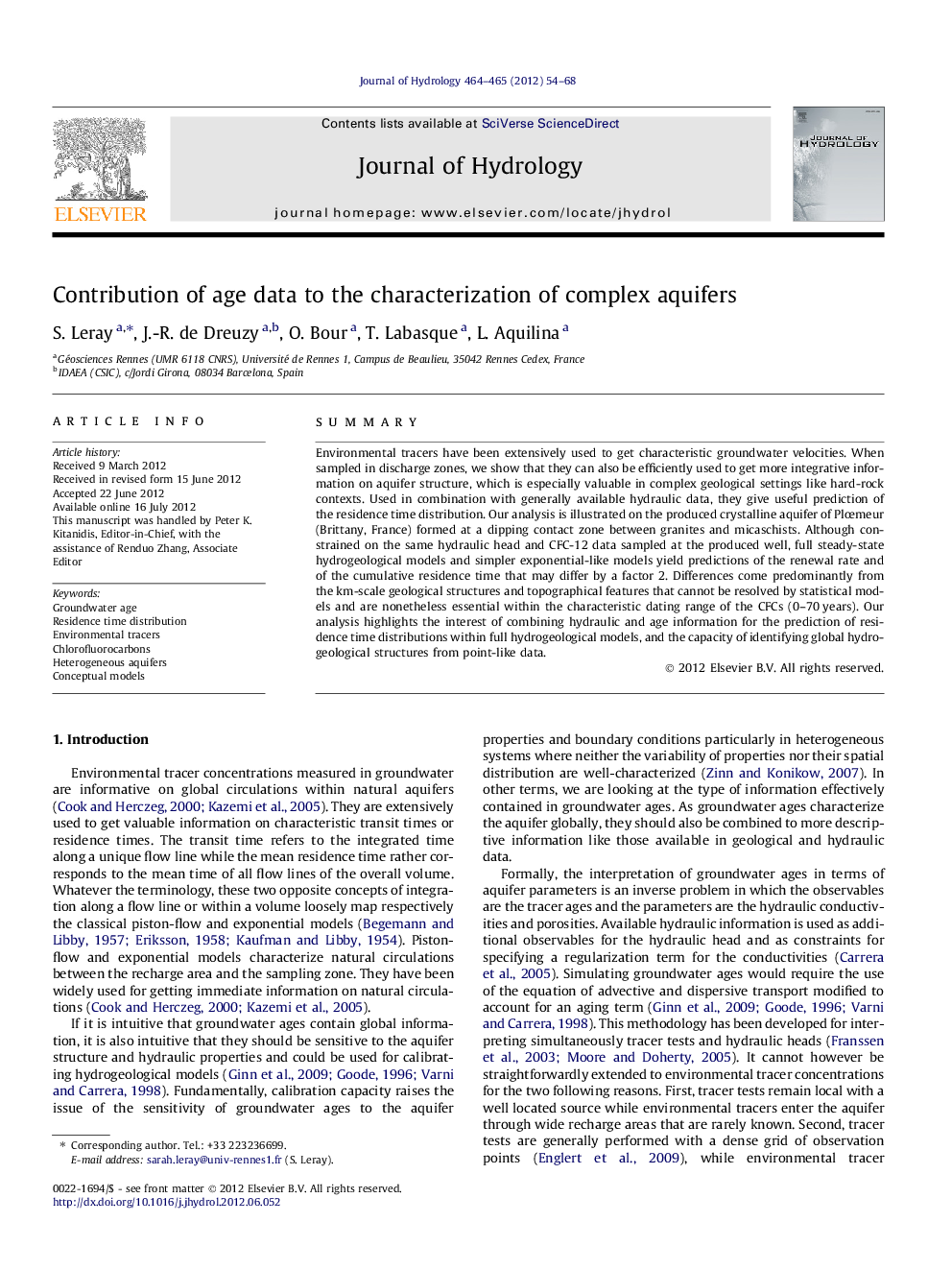| Article ID | Journal | Published Year | Pages | File Type |
|---|---|---|---|---|
| 6413839 | Journal of Hydrology | 2012 | 15 Pages |
SummaryEnvironmental tracers have been extensively used to get characteristic groundwater velocities. When sampled in discharge zones, we show that they can also be efficiently used to get more integrative information on aquifer structure, which is especially valuable in complex geological settings like hard-rock contexts. Used in combination with generally available hydraulic data, they give useful prediction of the residence time distribution. Our analysis is illustrated on the produced crystalline aquifer of PlÅmeur (Brittany, France) formed at a dipping contact zone between granites and micaschists. Although constrained on the same hydraulic head and CFC-12 data sampled at the produced well, full steady-state hydrogeological models and simpler exponential-like models yield predictions of the renewal rate and of the cumulative residence time that may differ by a factor 2. Differences come predominantly from the km-scale geological structures and topographical features that cannot be resolved by statistical models and are nonetheless essential within the characteristic dating range of the CFCs (0-70Â years). Our analysis highlights the interest of combining hydraulic and age information for the prediction of residence time distributions within full hydrogeological models, and the capacity of identifying global hydrogeological structures from point-like data.
Graphical abstractDownload full-size imageHighlights⺠Information content of environmental tracer concentrations in granitic aquifers. ⺠Calibration of aquifer properties and structure from head and tracer age data. ⺠Age data should be used to constrain aquifer structure rather than recharge rate. ⺠Age data give only rough estimates of residence time distributions. ⺠Resident time distribution benefit from the additional use of hydraulic information.
